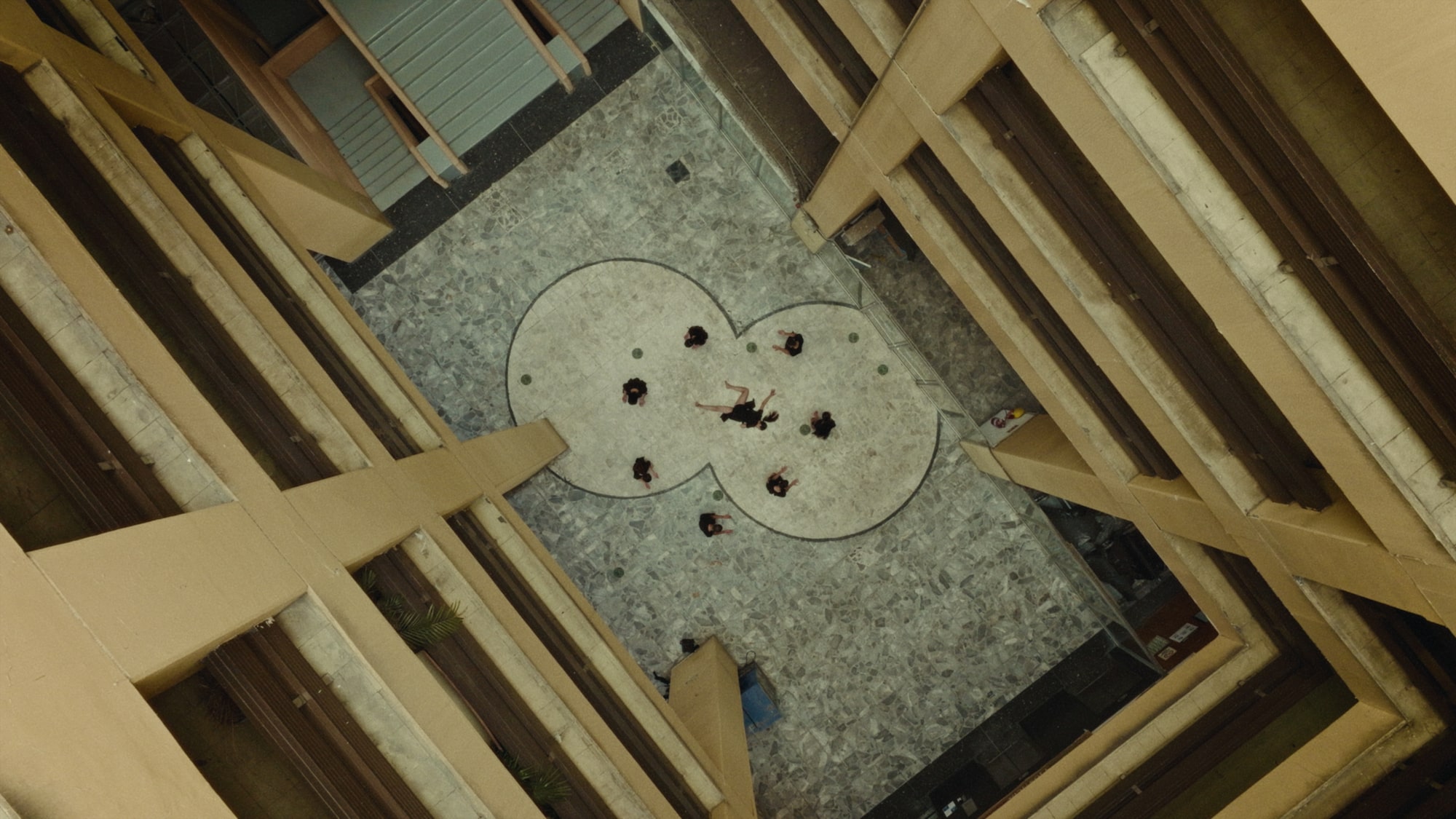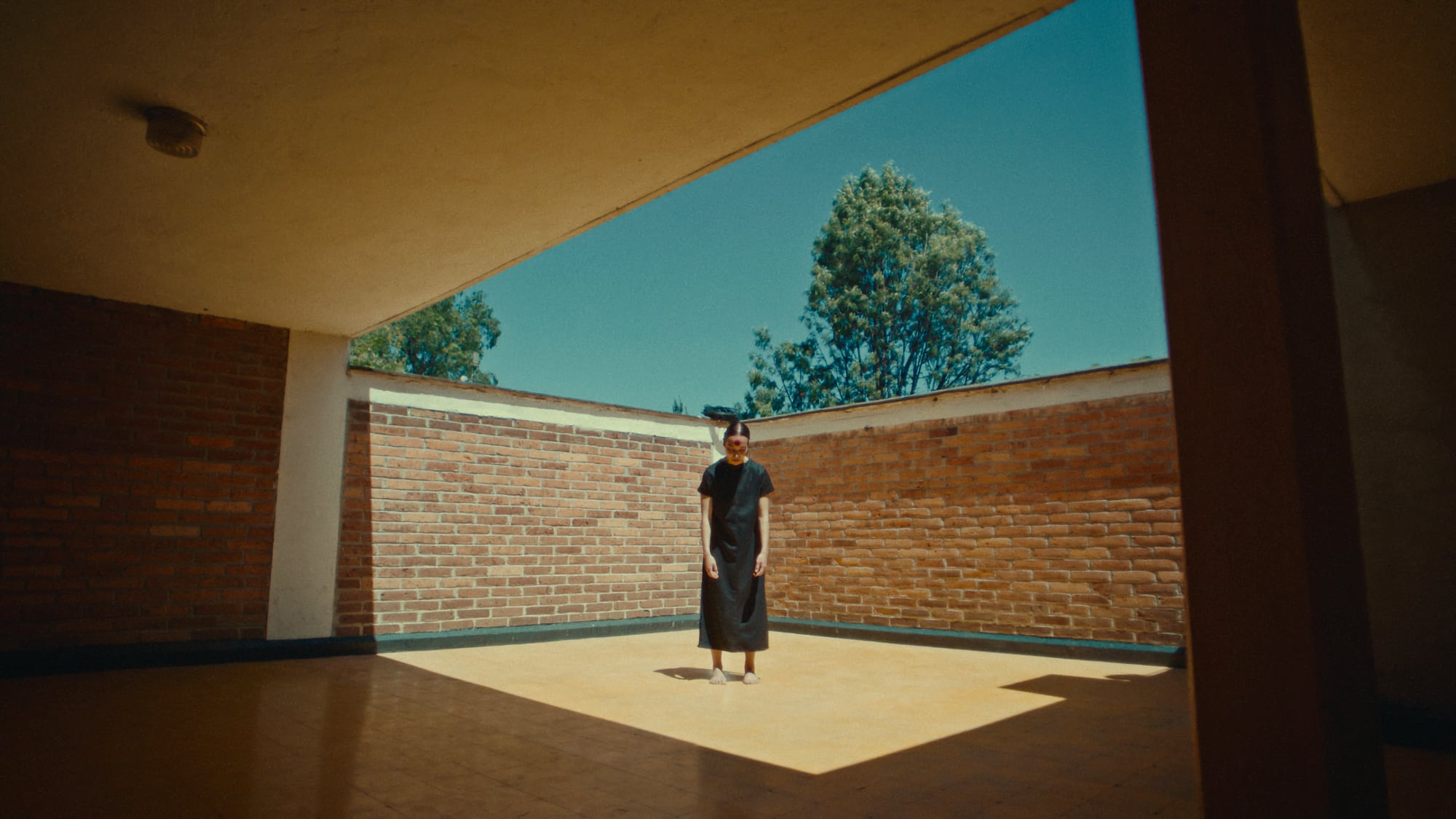
Mexico City is vast and awe-inspiring; a city that stretches on forever, filled with millions upon millions of people all jostling for space. It’s the perfect location for a powerful dance piece, allowing both performers and the city to interact with one another. Inspired by the circle of death performed by wayward ants, Berlin and Mexico City-based Director Phillip Kaminiak collaborates with Jacob Jonas The Company to create a truly visual spectacle with Circle. Alternating between empty buildings, panoramic rooftop shots and birds-eye compositions, the intuitive editing brings together various disparate elements to create a powerful ode to mankind’s place in the metropolis as well as the overwhelming, transient nature of modernity. We had the chance to talk to Kaminiak about how he became part of the Films.Dance series alongside choreographer QiaoQiao Zhang, being stimulated by a trip to Ecuador, how he achieved the stunning drone footage and shooting the film in only two days.
I’d love to know how your collaboration with Jacob Jonas The Company and QiaoQiao Zhang came about, and what kind of brief you had for the film.
There was no brief. Jacob Jonas The Company in this case just asked me if I wanted to do a Films.Dance in Mexico City. The dancers were already chosen and Choreographer QiaoQiao wrote a three paragraph concept about the meaning of her choreography. It was about “the human as its own biggest obstacle“, for example, by developing viruses, and stopping their evolution by destroying themselves. At least this is how I understood it. I said I would love to shoot this in Mexico City but for me it would be important to give this a narrative meaning, a second layer, and Mexico City needed to be a protagonist as well.
Right around that time, I went to the North Amazon in Ecuador and spent two days there. That’s where I observed the phenomenon of the circle of death: thousands of ants that lost their pheromone track and ran in a circle until they died. This spectacle was very important and meaningful to me. The next morning I woke up and it all made sense: QiaoQiao’s concept in relation to the ant circle and mass cities like Mexico City in relation to humans functioning like ants in our turbo-capitalist, high-speed times. I wrote all that down in a small notebook and introduced the idea of the circle into the film. That was it. I knew we would have to shoot a lot from above.

The drone footage in particular seems very inspired. What was the challenge in creating it and making sure that you got the exact shots that you wanted?
We used two types of drones. A bigger one for more controlled environments and a smaller one for ninja-style. It meant flying the drone from rooftops as far as we could and catching as much variety as possible. We wanted to cut through all kinds of neighbourhoods, and all kinds of social structures, to show that we are all ants: victims of a capitalistic system that won’t allow us to rest ever again. We tried to make everything very small. We flew the drones as high as we could and the Drone Operator Luciano Larabina was squeezing it all out of them. There was no challenge. I had Luciano, who is the best!
That’s where I observed the phenomenon of the circle of death: thousands of ants that lost their pheromone track and ran in a circle until they died.
There are a lot of setups here. I assumed you had quite a lean operation. What kind of cameras and lenses did you use? And how many individual scenes/shots did you have in total?
We shot this in only two days. I am quite impressed by that myself. Partly we needed to improvise because locations cancelled on us on the day and we needed to just try out something else. But that’s easy if you have a clear idea and know what you need and want. If a location changes but you keep the same approach, are open to face something new, adapt and be playful and thankful for what you get instead, it’s not a problem. We shot six locations a day. While I was shooting Alexa Mini with Pentax Vintage Photo lenses from the gimbal, Luciano was flying around the neighbourhood for aerial shots. Then we did the dance drones together and then spent another 15-30 minutes at each location to see what was interesting. Everything was quite improvised, but while following what we needed.

The choreography is both controlled and chaotic, with lots of energy and movement there. How did you work with QiaoQiao and what kind of movements did you want to focus on?
QiaoQiao was choreographing via Zoom video call and Carla Segovia was kind of the head of the dancers in Mexico (translating and directing on the spot). They built the choreography and I attended most of the rehearsals, trying to influence the timing of events, structuring the three parts and trying to push the expressions of the dance into expressions that work and look good from above. Usually, you dance from a stage to an audience or a camera, but here it was important to have big movements that were visible from a distance and also from a top view which is unusual. This needed to be enhanced.
If a location changes but you keep the same approach, are open to face something new, adapt and be playful and thankful for what you get instead, it’s not a problem.


The cutting is brilliant too, especially with the way it cuts on the beat early on, allowing all the dancers to truly feel interconnected — not just with each other, but the city as a whole. How challenging was the edit, especially when bringing all these different elements together?
The idea was to create this feeling of simultaneousness all around the city. Simultaneousness amongst ants, dancers, and humans as little dots in the city. I had the opportunity to work again with Editor Sander Houtkruijer and Composer Raven Bush. We developed a workflow which is maybe a bit unusual. Raven, Sander and I let the edit influence the music and the other way around. Both edit and music are created simultaneously and are completely of the same importance. We edit a bit then go into music. Afterwards the music gives the pace for the edit, but then the edit needs more or less time here and there, so Raven then starts to edit the music. Usually it’s more like: edit is done, score is made on top, or music is done and the edit goes with it. I think our workflow lets these two disciplines communicate with each other. It’s a dialogue between edit and music.
What are you working on next?
I want to shoot a fictional, narrative short film. Besides that, I work as a cinematographer.


